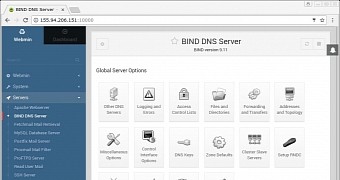4MLinux developer Zbigniew Konojacki informs Softpedia on Sunday about the release and general availability of TheSSS (The Smallest Server Suite) 22.2 independently-developed, 4MLinux-based server-oriented GNU/Linux distribution.
Based on 4MLinux Server 22.2, TheSSS (The Smallest Server Suite) 22.2 is here one month after the 22.1 point release to update various of its core components of the built-in LAMP (Linux, Apache, MariaDB and PHP) server, which is now powered by Linux kernel 4.9.43 LTS, Apache 2.4.27, MariaDB 10.2.7, PHP 7.0.22 and 5.6.31, as well as the BIND 9.11.2 DNS server and Stunnel 5.42 SSL tunnel.
"This is a minor (point) release based on the 4MLinux Server 22.2, meaning that the components of the LAMP server are now: Linux 4.9.43, Apache 2.4.27, MariaDB 10.2.7, and PHP (both 5.6.31 and 7.0.22). The following server software has also been updated: BIND (9.11.2) and Stunnel (5.42)," said Zbigniew Konojacki in the release announcement.
Existing users can update their TheSSS systems if they run the "zk update" command in the terminal emulator. The update process is fully automatic, so you won't have to do anything. But, being a small image, we recommend downloading the TheSSS 22.2 ISO right now from our website and write it on a USB flash drive or CD/DVD disc.
Deploying a Linux server was never this easy
Those unfamiliar with TheSSS (The Smallest Server Suite) will be glad to learn that the project provides them with a live server suite that lets them run a full-featured Linux server without installing any package on their computer, directly from the bootable medium. TheSSS is a lightweight and fast server solution, and it's free.
Being designed with the system administrator in mind, TheSSS is perfect for webmaster and web designers who need to put together a fast and ready-for-deployment server. Deploying a server was never this easy and TheSSS supports HTTP, HTTPS, MySQL, FTP, SFTP, SSH, DNS, SMTP, and Telnet. More details can be found on the project's website, and you can view a demo here.

 14 DAY TRIAL //
14 DAY TRIAL //